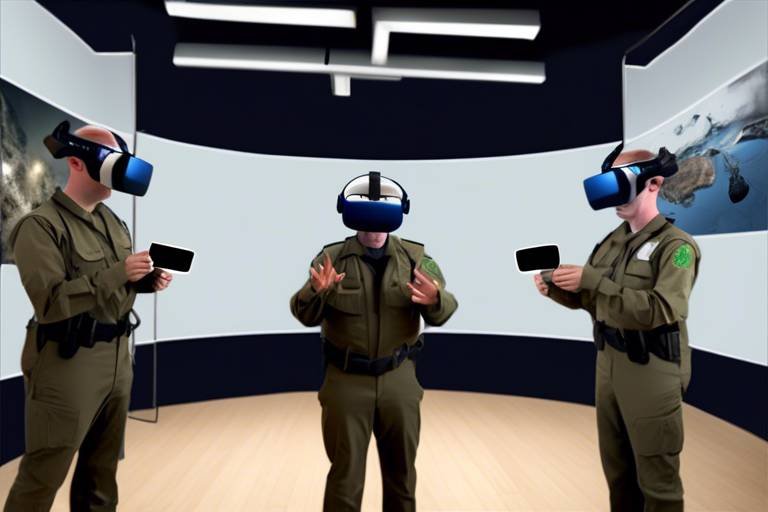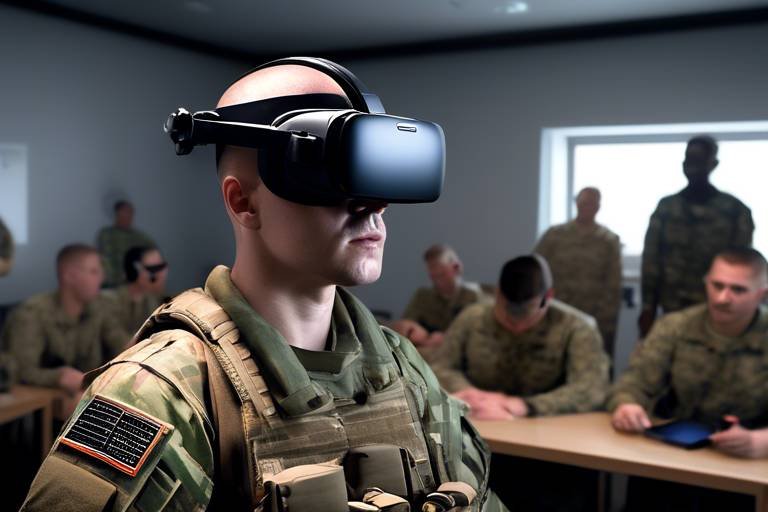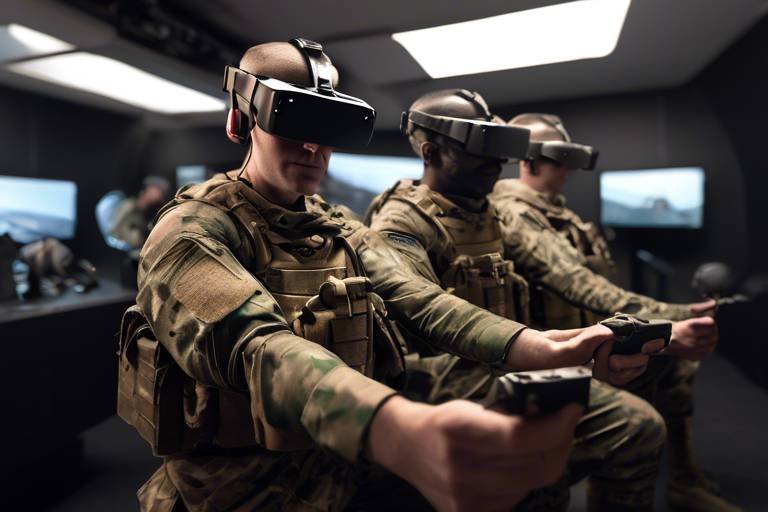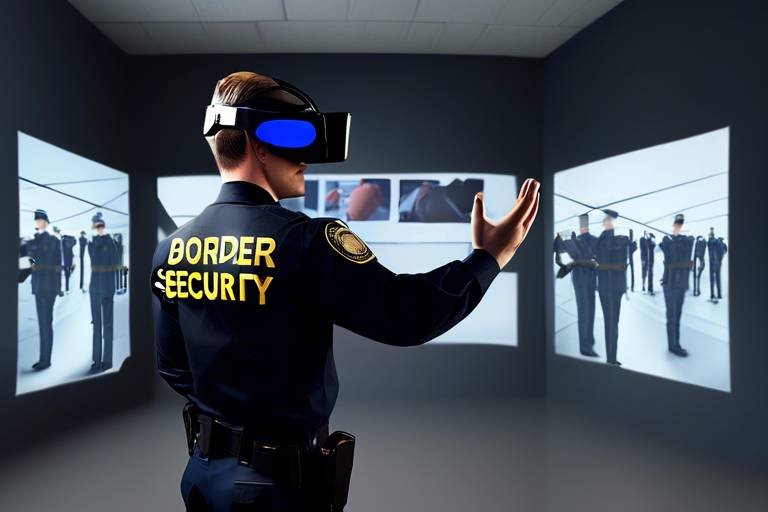Using VR for Threat Assessment and Mitigation Training
In today's fast-paced world, the ability to assess and mitigate threats effectively has never been more crucial. With the rise of innovative technologies, virtual reality (VR) has emerged as a game-changer in training methodologies. This article explores the innovative use of VR in enhancing threat assessment and mitigation training, detailing its benefits, applications, and future potential in various sectors. Imagine being able to step into a high-stakes situation without any real-world consequences—this is the power of VR. It not only prepares individuals for real-life scenarios but also equips them with the skills necessary to respond effectively under pressure.
Virtual reality technology immerses users in a simulated environment, providing a unique platform for interactive training. At its core, VR creates a three-dimensional space where users can interact with the environment as if they were physically present. This immersive quality is particularly relevant to threat assessment training, where understanding the nuances of a situation can be the difference between success and failure. By engaging multiple senses, VR fosters a deeper connection to the training material, making it easier for trainees to internalize critical information.
Utilizing VR for training offers numerous advantages, including increased engagement, realistic scenarios, and enhanced retention of information. One of the most compelling benefits of VR is its ability to create realistic training environments that closely mimic real-world situations. This realism not only captures the attention of trainees but also enhances their ability to recall information later. When trainees can visualize and practice their responses in a controlled setting, they are more likely to retain those lessons when faced with actual threats.
VR creates lifelike scenarios that mimic real-world situations, allowing trainees to practice responses in a safe environment. This enhanced realism is crucial for developing decision-making skills during high-pressure situations. For example, consider a fire safety training scenario where trainees can experience a simulated fire outbreak. The realistic sounds, visuals, and even the heat sensations can evoke genuine emotional responses, making the training memorable. The brain processes these experiences similarly to real-life situations, thereby improving the trainee's ability to react appropriately when it matters most.
Immersive experiences in VR can lead to deeper understanding and retention of information. The psychological effects of immersion on learning and skill acquisition are profound. When trainees are fully engaged, their ability to absorb and recall information improves significantly. This is akin to watching a gripping movie—you become so involved in the story that you remember every detail. In the context of threat assessment training, this immersion allows individuals to practice critical thinking and problem-solving in an engaging way, leading to better learning outcomes.
VR provides a risk-free setting for trainees to make mistakes and learn from them. This part is essential in threat assessment training, where the stakes can be incredibly high. In traditional training methods, the fear of making errors can hinder learning. However, in a VR setting, trainees can experiment, fail, and learn without any real-world repercussions. This freedom encourages exploration and innovation, ultimately leading to more competent individuals ready to tackle threats head-on.
One of the strengths of VR is its ability to create tailored training scenarios. Different industries face unique threats, and VR can be customized to address these specific challenges. For instance, a corporate security team might simulate a data breach, while emergency responders could practice handling a natural disaster. This level of customization ensures that training is relevant and directly applicable, making it more effective in preparing individuals for real-world situations.
VR is being adopted across multiple fields, from military training to corporate security. The versatility of VR allows it to be utilized in a wide range of applications, each tailored to meet the specific needs of different sectors. This adaptability not only enhances training effectiveness but also promotes a culture of continuous learning and improvement.
In the military, VR is used for tactical training and threat simulations. Soldiers can engage in realistic combat scenarios without the risks associated with live training exercises. For example, VR training can simulate various terrains and conditions, allowing military personnel to practice strategies and improve their response times. The effectiveness of these simulations has been proven through numerous studies, showing that soldiers who undergo VR training are better prepared for real-life operations.
Corporations are increasingly using VR for employee training in security protocols. In a world where cyber threats are prevalent, VR can simulate phishing attacks or data breaches, helping employees recognize and respond to such threats effectively. This proactive approach not only enhances employee readiness but also strengthens the organization’s overall security posture. By immersing employees in realistic scenarios, companies can foster a culture of vigilance and preparedness.
- What is VR training? VR training uses virtual reality technology to create immersive learning experiences, allowing users to practice skills in a simulated environment.
- How does VR improve learning outcomes? VR enhances engagement and realism, which leads to better retention and understanding of complex scenarios.
- Is VR training safe? Yes, VR training provides a risk-free environment for practice, allowing trainees to learn from mistakes without real-world consequences.
- Can VR training be customized? Absolutely! VR scenarios can be tailored to meet the specific needs of different industries and threats.
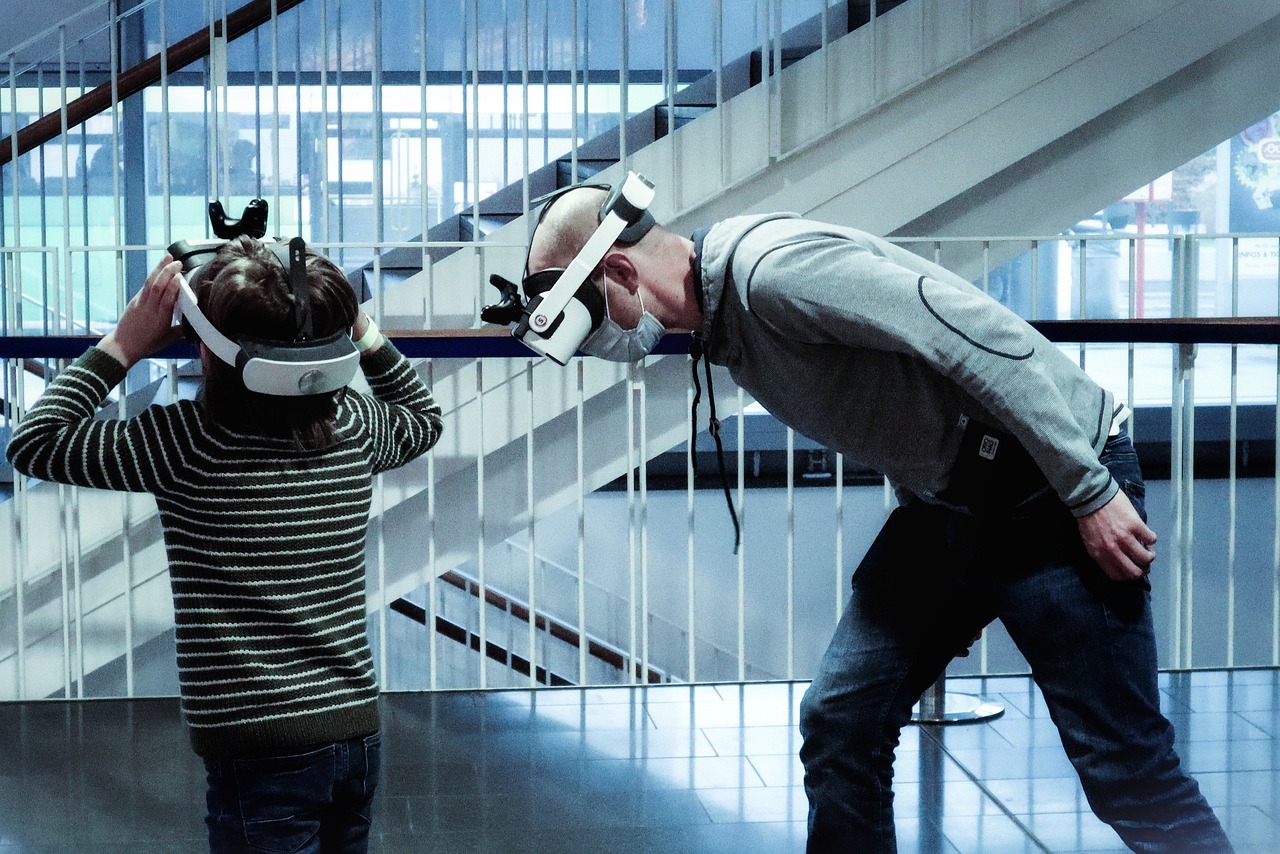
Understanding VR Technology
Virtual reality (VR) technology has revolutionized the way we approach training and education. At its core, VR immerses users in a computer-generated environment that can simulate real-world scenarios with astonishing detail. Imagine stepping into a world where you can interact with objects and environments that feel incredibly real. This immersive experience is made possible through a combination of hardware and software, including headsets, motion sensors, and interactive controllers.
So, why is VR particularly relevant for threat assessment training? The answer lies in its ability to create highly realistic simulations that mimic potential threats and emergencies. Whether it’s a natural disaster, an active shooter situation, or a cybersecurity breach, VR can replicate these scenarios in a controlled manner, allowing trainees to practice their responses without real-world consequences. This is not just about playing a game; it’s about preparing for situations that could have serious implications.
VR technology operates on several key components:
- Head-Mounted Displays (HMDs): These are the goggles or headsets worn by users that provide the visual experience of being in a different environment.
- Motion Tracking: Sensors track the user's movements, allowing them to interact with the virtual world in real-time.
- Audio Feedback: Immersive sound effects enhance the realism of the environment, making the experience more engaging.
- Interactive Controllers: These devices allow users to manipulate objects and navigate through the virtual space.
Understanding these components is essential for grasping how VR enhances threat assessment training. By utilizing this technology, trainers can design scenarios that are not only realistic but also adaptable. For example, a training program can be tailored to focus on specific threats relevant to a particular industry, whether it's healthcare, education, or corporate security.
Moreover, VR technology is continually evolving. Advances in graphics, processing power, and user interfaces are making experiences even more lifelike and engaging. The integration of artificial intelligence (AI) can further enhance these simulations by introducing unpredictable elements, allowing trainees to think on their feet and make quick decisions in a safe environment.
In summary, understanding VR technology is crucial for leveraging its full potential in threat assessment and mitigation training. By immersing trainees in realistic scenarios, we can significantly improve their preparedness for real-world situations, ultimately leading to better outcomes in crisis management.

Benefits of VR in Training
When it comes to training, especially in high-stakes environments, traditional methods often fall short. Enter Virtual Reality (VR)—a game-changer in the realm of training. By immersing users in a simulated environment, VR not only enhances engagement but also transforms the way we learn. Imagine stepping into a lifelike situation where every detail is crafted to replicate real-world challenges. This immersive experience is what sets VR apart, making it an invaluable tool for threat assessment and mitigation training.
One of the standout benefits of utilizing VR in training is the increased engagement it offers. Unlike conventional training methods, which can sometimes feel mundane or overly theoretical, VR captivates trainees by placing them directly in the action. This engagement is crucial because studies have shown that when learners are actively involved, they retain information better. In fact, research indicates that immersive learning experiences can boost retention rates by up to 75% compared to traditional methods.
Moreover, VR allows for the creation of realistic scenarios that closely mimic the situations trainees may face in their respective fields. For example, a corporate security team can practice responding to a simulated breach, complete with realistic sounds and visual cues. This level of realism is essential for honing decision-making skills under pressure. When trainees can practice their responses in a safe yet realistic environment, they are more likely to perform effectively when the stakes are high.
Imagine being in a high-pressure situation where every second counts. In such moments, the ability to make quick and accurate decisions can mean the difference between success and failure. VR enhances realism by providing lifelike scenarios that challenge trainees to think critically and act swiftly. This immersive experience not only boosts confidence but also sharpens the skills necessary to navigate complex situations. The psychological effects of this realism cannot be overstated; trainees report feeling more prepared and capable after engaging in VR training.
Have you ever watched a movie that left you feeling like you were part of the story? That’s the kind of experience VR aims to replicate in training. The psychological impact of being fully immersed in a scenario leads to deeper understanding and retention of information. When trainees are surrounded by a 360-degree environment, they are more likely to engage emotionally and cognitively with the material. This emotional connection fosters a more profound learning experience, making the information more relatable and easier to recall later.
One of the most significant advantages of VR is the risk-free setting it provides. In traditional training, mistakes can lead to real-world consequences, which can be daunting for trainees. However, VR eliminates this fear by allowing individuals to make mistakes and learn from them without any real-world repercussions. This safe learning environment encourages experimentation and exploration, which are crucial for effective training. Trainees can practice various scenarios, learn from their errors, and refine their skills without the anxiety of negative outcomes.
Another remarkable feature of VR is its ability to create customized training scenarios. Every industry faces unique threats, and VR can be tailored to address these specific challenges. For instance, a healthcare organization might simulate a mass casualty incident, while a corporate entity could focus on cybersecurity threats. This level of customization ensures that the training is relevant and effective, directly addressing the potential risks faced by the trainees. By focusing on industry-specific scenarios, organizations can significantly enhance the effectiveness of their threat assessment and mitigation training.
In conclusion, the benefits of VR in training are profound and far-reaching. From increased engagement and enhanced realism to the creation of a safe learning environment and the customization of scenarios, VR is revolutionizing how we approach threat assessment and mitigation training. As technology continues to evolve, the potential for VR to transform training across various sectors is boundless.
- What is Virtual Reality (VR)? VR is a technology that immerses users in a computer-generated environment, allowing for interactive experiences.
- How does VR enhance training? VR enhances training by providing realistic scenarios, increasing engagement, and allowing for practice in a safe environment.
- Can VR be customized for specific industries? Yes, VR can be tailored to create scenarios that address the unique threats faced by different industries.
- Is VR training effective? Yes, studies have shown that VR training can significantly improve retention rates and decision-making skills compared to traditional training methods.

Enhanced Realism
When it comes to training for high-stakes situations, realism is key. Imagine being in a scenario where every sound, sight, and even smell feels authentic—this is what virtual reality (VR) brings to the table. In traditional training environments, you might role-play or watch videos, but nothing compares to the immersive experience of stepping into a lifelike simulation. VR allows trainees to engage in realistic scenarios that closely mimic real-world situations, which can significantly enhance their decision-making skills under pressure.
Consider a firefighter training for a building blaze. In a VR setting, they can experience the heat, smoke, and chaos of a fire without any real danger. This kind of immersive experience not only prepares them for the physical requirements of the job but also conditions their mental responses. Wouldn’t you agree that facing a simulated fire is far more beneficial than just reading about it in a manual? The stakes are high, and the training must reflect that reality.
The enhanced realism of VR training also allows for the observation of human behavior in crisis situations. Instructors can analyze how trainees react to specific stimuli, providing invaluable feedback that can be used to improve future performance. For instance, if a trainee hesitates during a critical moment, this can be addressed in a debriefing session, allowing them to understand their thought process and refine their responses. This feedback loop is crucial for developing effective decision-making skills.
Moreover, the psychological effects of realism cannot be underestimated. When individuals are placed in a realistic environment, their brain responds as if they are actually experiencing the event. This phenomenon, known as presence, enables deeper emotional and cognitive engagement. Trainees are more likely to remember their experiences and learn from them, which is essential for skill acquisition.
In summary, enhanced realism in VR training is not just about creating lifelike scenarios; it’s about fostering an environment where trainees can learn, adapt, and grow. By simulating real-world situations, VR prepares individuals for the unexpected, ensuring they are ready to tackle challenges head-on. The benefits of this realism extend beyond the training room, equipping individuals with the confidence and skills needed in critical situations.

Immersive Learning Experiences
When it comes to learning, the more immersive the experience, the better the retention. Imagine being in a room where the walls are painted with the sights and sounds of a bustling city, complete with the chatter of people and the honking of cars. This is the magic of virtual reality (VR). It allows trainees to step into a completely different world, engaging their senses in ways that traditional training methods simply cannot. In VR, learners are not just passive recipients of information; they are active participants in a dynamic environment that challenges them to think critically and respond in real-time.
The psychological effects of immersion are profound. Studies have shown that when individuals are fully engaged in a learning experience, they are more likely to remember the information presented. This is particularly important in threat assessment training, where the stakes are high, and quick decision-making can mean the difference between safety and disaster. VR provides a multi-sensory experience that stimulates the brain, making it easier to recall information during high-pressure situations. For example, a trainee might find themselves in a simulated emergency scenario where they must assess a threat and decide on a course of action. The intensity of the situation, combined with the realism of the VR environment, helps to solidify their learning.
Furthermore, immersive learning experiences can cater to various learning styles. Some individuals learn best through visual stimuli, while others may find that they retain information better through auditory cues or hands-on practice. VR encompasses all these elements, allowing for a more personalized training experience. Trainees can interact with their environment, engage with virtual characters, and even receive immediate feedback on their performance. This adaptive learning approach ensures that each individual can progress at their own pace, reinforcing their understanding of complex concepts.
In addition to enhancing retention and engagement, immersive learning experiences in VR can also foster collaboration among trainees. In many real-world situations, teamwork is crucial for effective threat assessment and mitigation. VR training can simulate scenarios where multiple individuals must work together to navigate challenges, allowing them to practice communication and coordination skills. This collaborative aspect not only builds camaraderie but also prepares trainees for the realities of working in high-stakes environments.
To summarize, the benefits of immersive learning experiences in VR are vast. They offer a unique blend of realism, engagement, and adaptability, making them an invaluable tool in threat assessment and mitigation training. As technology continues to evolve, we can expect even more innovative applications of VR that will further enhance the learning journey for trainees across various sectors.

Safe Environment for Practice
One of the most significant advantages of utilizing virtual reality (VR) in threat assessment and mitigation training is the creation of a . In traditional training methods, participants often face real-world risks and pressures that can lead to anxiety or even dangerous situations. However, VR transforms this landscape by providing a controlled setting where trainees can explore various scenarios without the fear of real-life consequences. Imagine being able to practice emergency response protocols in a virtual building on fire, where you can make decisions and learn from your mistakes without putting anyone in harm's way. This level of safety encourages experimentation and fosters a mindset of learning and growth.
In a VR training module, participants can engage in high-stakes situations—like active shooter drills or natural disaster responses—while being fully aware that they are in a virtual world. This awareness allows them to focus entirely on their decision-making processes rather than worrying about potential repercussions. As a result, trainees can develop their skills in a way that is not only effective but also empowering. They can make mistakes, learn from them, and refine their responses, all within a supportive and risk-free environment.
Moreover, the ability to repeat scenarios as often as necessary is another compelling aspect of VR training. Trainees can engage in the same simulation multiple times, each time learning something new or refining their skills. This repetition is crucial for muscle memory and cognitive retention. For instance, if a security officer is trained to handle a bomb threat, they can practice the response over and over again, ensuring that when a real threat occurs, their reactions are instinctual and well-practiced.
The implications of a safe training environment extend beyond individual trainees. Organizations can benefit significantly from this approach as well. By investing in VR training, companies can reduce the risk of workplace incidents and ensure that their employees are well-prepared for emergencies. This not only enhances the overall safety culture within the organization but also boosts employee confidence and morale. In a VR setting, employees can bond over shared experiences, discuss their reactions, and collaboratively improve their strategies for dealing with potential threats.
In summary, the safe environment provided by VR training is a game-changer in threat assessment and mitigation. It allows for realistic practice without the risks associated with real-life scenarios, encourages learning through experimentation, and ultimately prepares individuals and organizations to respond effectively to actual threats. As we continue to explore the potential of VR in training, it’s clear that the safety it offers is not just a feature but a fundamental aspect that enhances the learning experience.
- What is VR training? - VR training uses virtual reality technology to simulate real-world scenarios for educational purposes, allowing users to practice skills in a safe environment.
- How does VR improve learning outcomes? - VR enhances engagement and retention by immersing users in realistic scenarios, enabling them to practice responses without real-world consequences.
- Can VR training be customized? - Yes, VR training can be tailored to address specific threats and scenarios relevant to different industries, making it a versatile tool for training.
- Is VR training effective in high-pressure situations? - Absolutely! VR allows trainees to practice decision-making under pressure in a controlled environment, improving their skills for real-life situations.

Customization of Scenarios
One of the most remarkable features of virtual reality (VR) technology is its ability to create customized training scenarios tailored to meet the specific needs of various industries. Imagine being able to simulate a high-stakes situation that reflects the exact challenges your team might face in real life. This level of customization not only enhances the relevance of the training but also significantly boosts the effectiveness of the learning experience.
For instance, in the realm of corporate security, a company can design a VR scenario that mimics a potential data breach. Trainees can practice their responses to different stages of the breach, allowing them to better understand their roles and responsibilities in real-time. This hands-on experience is invaluable, as it prepares employees to react swiftly and effectively when faced with actual threats.
Moreover, customization allows for the incorporation of industry-specific threats. Different sectors face unique challenges, and VR can be programmed to address these. For example:
- Healthcare: Simulating an active shooter scenario in a hospital setting, training staff on evacuation procedures and patient safety protocols.
- Education: Creating scenarios for school staff to practice lockdown procedures during emergencies.
- Transportation: Designing flight crew training for in-flight emergencies, allowing them to practice decision-making under pressure.
This level of tailored training not only increases engagement but also enhances the retention of critical information. When trainees can visualize and practice their responses in a realistic setting, they are more likely to remember what they learned. The brain processes experiences in VR similarly to real life, making the training more impactful.
Furthermore, customization extends beyond just the scenarios themselves. VR platforms can also adapt to different learning styles and paces. Some learners may thrive in high-pressure scenarios, while others might benefit from a more gradual introduction to challenging situations. By adjusting the difficulty and complexity of the training exercises, VR can cater to individual needs, ensuring that everyone gets the most out of their training experience.
In conclusion, the ability to customize VR training scenarios is a game-changer in threat assessment and mitigation training. It not only creates a more engaging and relevant learning environment but also equips trainees with the skills and confidence they need to handle real-world threats effectively. As technology continues to advance, the potential for even more sophisticated and tailored training experiences will only grow, paving the way for a safer future across various sectors.
Q1: How does VR enhance learning retention?
A1: VR immerses users in realistic scenarios, which helps create strong mental associations. This immersive experience makes it easier for learners to recall information when faced with similar situations in real life.
Q2: Can VR training be adapted for different industries?
A2: Absolutely! VR training can be customized to address the specific threats and challenges faced by various industries, such as healthcare, education, and corporate security.
Q3: Is VR training safe for employees?
A3: Yes, VR provides a risk-free environment where employees can practice their responses to threats without any real-world consequences. This allows them to learn from mistakes and build confidence.
Q4: What are the limitations of VR training?
A4: While VR training is highly effective, it may require a significant initial investment in technology and content development. Additionally, some users may experience motion sickness or discomfort during VR sessions, which needs to be managed carefully.
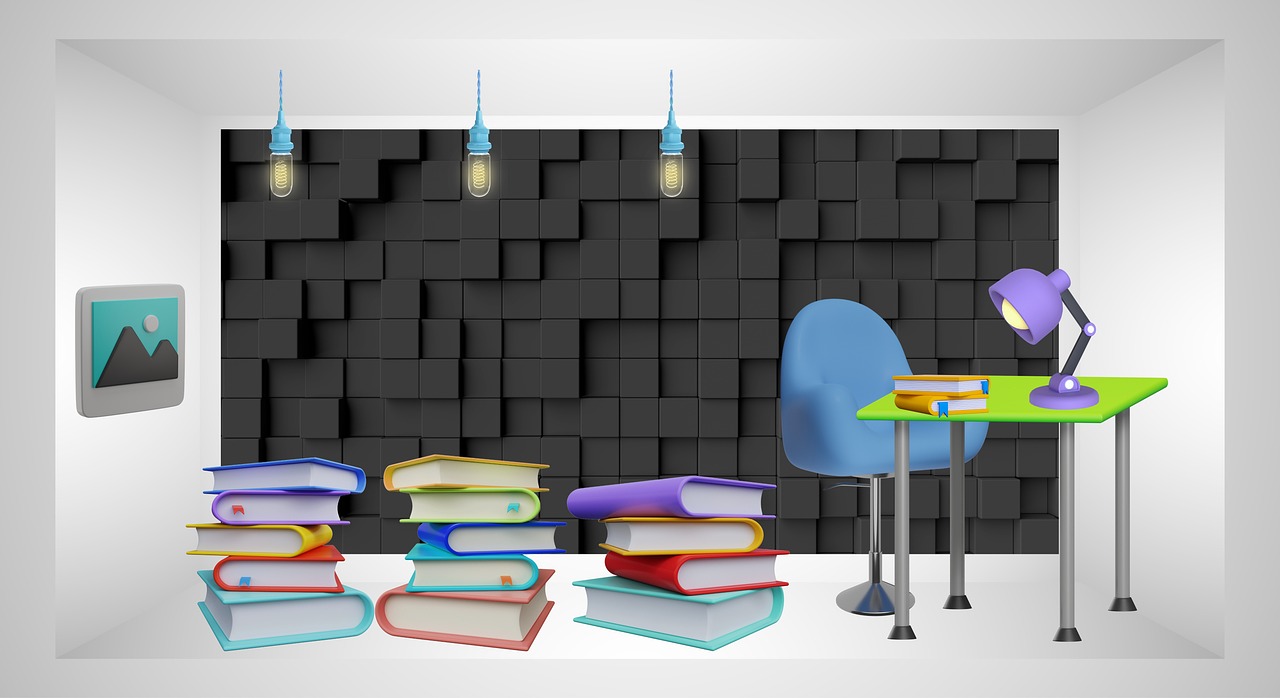
Applications in Various Sectors
Virtual reality (VR) has emerged as a groundbreaking tool across a plethora of industries, revolutionizing the way organizations approach threat assessment and mitigation training. The immersive nature of VR allows for tailored experiences that can simulate real-world scenarios, making it an invaluable resource for training programs. From the military to corporate environments, VR is being harnessed to prepare individuals for potential threats in a controlled and engaging manner.
In the military sector, for instance, VR is utilized for tactical training and threat simulations. Soldiers can engage in realistic combat scenarios that replicate the stresses and unpredictability of actual missions. This not only enhances their operational readiness but also sharpens their decision-making skills under pressure. With VR, military personnel can practice various strategies and responses to potential threats without the risks associated with live training exercises. For example, a soldier might find themselves in a VR simulation where they must navigate through hostile environments, assess threats, and make critical decisions—all while receiving real-time feedback on their performance.
On the corporate front, organizations are increasingly recognizing the value of VR in enhancing their security training protocols. Companies can create immersive training modules that prepare employees for various security threats, such as active shooter situations or cybersecurity breaches. By placing employees in lifelike scenarios, they can learn how to respond effectively, ensuring that they are not only aware of the protocols but also comfortable executing them under pressure. This hands-on approach to training fosters a culture of safety and preparedness within the organization.
Moreover, VR applications are not confined to just these two sectors. Industries such as healthcare, education, and emergency services are also tapping into the potential of VR for training purposes. For example, healthcare professionals can use VR to practice surgical procedures or patient interactions, allowing them to hone their skills in a risk-free environment. Similarly, educators can employ VR to create immersive learning experiences for students, enhancing their understanding of complex subjects through interactive simulations.
As we look toward the future, the potential applications of VR in threat assessment and mitigation training are virtually limitless. Organizations can customize scenarios to address specific threats pertinent to their field, ensuring that training is relevant and impactful. With continuous advancements in VR technology, we can expect even more sophisticated training programs that not only enhance learning outcomes but also contribute to a safer society overall.
- What is virtual reality (VR)?
VR is a technology that immerses users in a computer-generated environment, allowing them to interact with it in real-time. - How does VR enhance threat assessment training?
VR provides realistic simulations that help trainees practice responses in a safe environment, improving their decision-making skills under pressure. - What are some sectors using VR for training?
VR is being used in military, corporate security, healthcare, education, and emergency services, among others. - Can VR training be customized for specific threats?
Yes, one of the strengths of VR is its ability to create tailored training scenarios that address the unique threats relevant to different industries.
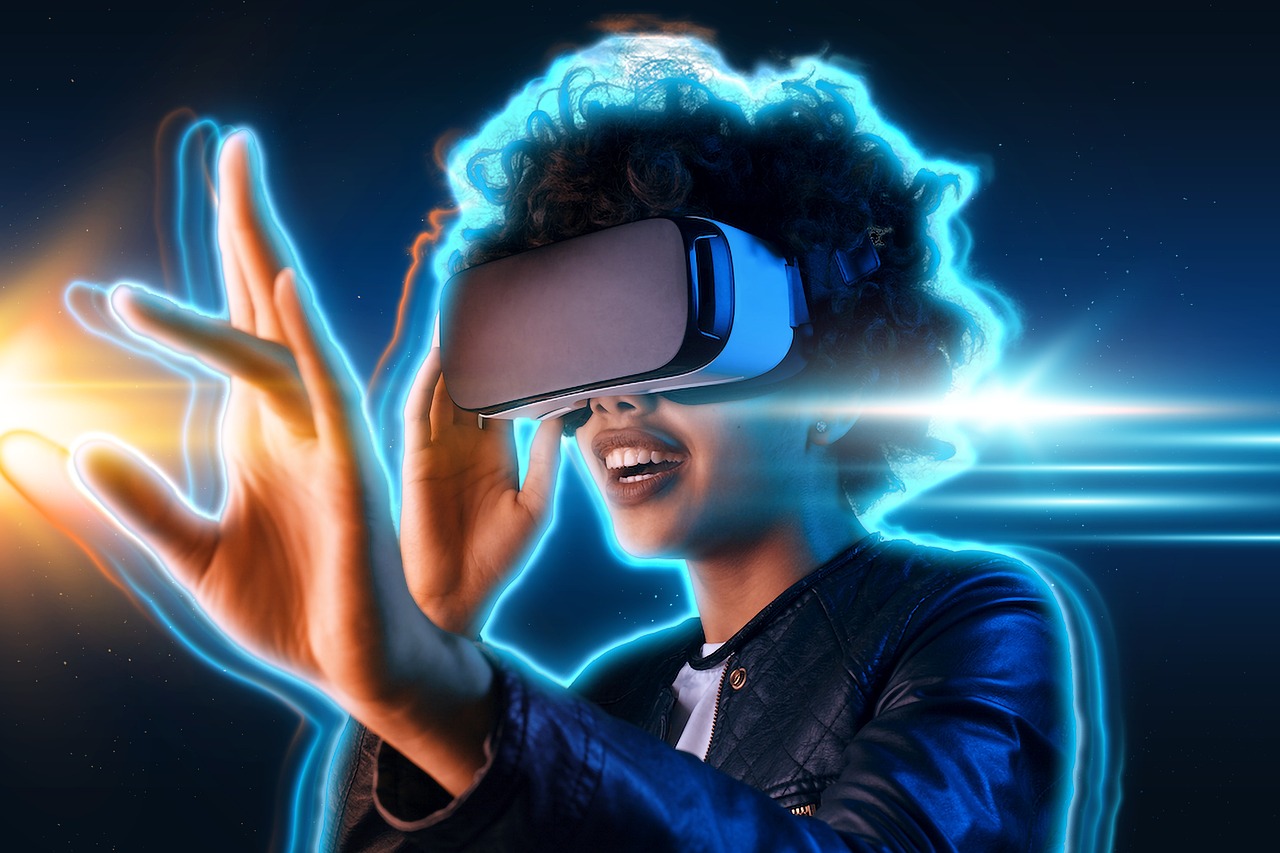
Military and Defense
In the realm of , the integration of virtual reality (VR) technology has revolutionized how armed forces prepare for real-world threats. Imagine a soldier training for a combat scenario without ever stepping onto an actual battlefield. This is the power of VR—it enables military personnel to engage in immersive simulations that replicate the complexities and chaos of combat situations. By immersing soldiers in these lifelike environments, they can practice their responses to various threats, from ambushes to hostage situations, all while honing their tactical skills.
One of the most significant advantages of VR in military training is its ability to create a wide range of scenarios that can be adjusted to suit specific training needs. For instance, a training module can be designed to simulate urban warfare, where soldiers must navigate through buildings and interact with civilians, making split-second decisions that could save lives. This level of customization ensures that the training is relevant and directly applicable to the soldiers' operational environments.
The effectiveness of VR training in the military is highlighted by several key benefits:
- Cost-Effectiveness: Traditional training exercises can be expensive and logistically challenging. VR reduces the need for physical resources and allows for repeated training without incurring additional costs.
- Immediate Feedback: Trainees receive instant feedback on their performance, enabling them to learn from mistakes in real-time and adjust their strategies accordingly.
- Team Coordination: VR can facilitate joint training exercises where multiple units can train together, improving communication and coordination in high-pressure situations.
Furthermore, VR technology allows for the safe exploration of dangerous scenarios without the risk of injury. Soldiers can experience the stress and unpredictability of combat situations while remaining secure in a controlled environment. This approach not only enhances their decision-making skills under pressure but also builds their confidence in handling real-life threats.
To illustrate the impact of VR in military training, consider the following table showcasing various VR applications:
| Application | Description | Benefits |
|---|---|---|
| Tactical Simulations | Simulating combat scenarios for tactical training. | Improves decision-making and strategy development. |
| Medical Training | Training medics in emergency response and trauma care. | Enhances skills in high-pressure medical situations. |
| Leadership Development | Training leaders in crisis management and team dynamics. | Prepares leaders for real-world challenges. |
As we look to the future, the potential for VR in military training continues to expand. With advancements in technology, we can expect even more realistic and engaging training experiences. The military's commitment to incorporating VR not only enhances the skills of individual soldiers but also strengthens the overall effectiveness of defense operations.
Q1: How does VR training differ from traditional training methods?
A1: VR training offers immersive, realistic scenarios that allow for safe practice and immediate feedback, contrasting with traditional methods that may lack interactivity and real-time assessment.
Q2: Are there any risks associated with VR training?
A2: While VR training is generally safe, some users may experience motion sickness or discomfort. However, these issues can often be mitigated through proper training and acclimatization.
Q3: How is VR technology being developed for future military applications?
A3: Ongoing advancements in VR technology focus on improving realism, interactivity, and the ability to simulate complex scenarios, ensuring that military training remains effective and relevant.

Corporate Security Training
In today's fast-paced corporate world, ensuring the safety and security of employees and assets is paramount. Virtual reality (VR) has emerged as a groundbreaking tool in corporate security training, transforming how organizations prepare their workforce for potential threats. Imagine stepping into a lifelike simulation where you can practice responding to security breaches or emergency situations without any real-world consequences. This is the power of VR, and its applications in corporate security are nothing short of revolutionary.
One of the most significant advantages of using VR for corporate security training is the ability to create realistic scenarios that employees might face. For instance, consider a scenario where an unauthorized individual attempts to access a restricted area. Through VR, employees can engage in role-playing exercises that simulate this situation, allowing them to practice their responses in a controlled environment. This hands-on experience not only boosts confidence but also enhances decision-making skills under pressure.
Moreover, VR training can be customized to reflect the specific security challenges of an organization. Whether it's a financial institution needing to train staff on fraud detection or a tech company focusing on data breach protocols, VR can be tailored to address these unique threats. This customization ensures that employees are not just going through the motions but are actively learning and applying skills that are relevant to their roles. The interactive nature of VR keeps trainees engaged, making the learning process both enjoyable and effective.
Another critical aspect of VR in corporate security training is the opportunity for immediate feedback. In traditional training methods, employees might complete a course or workshop and then return to their daily tasks without any real assessment of their skills. However, VR allows for real-time evaluation, where trainers can monitor performance and provide instant feedback. This continuous loop of practice and evaluation helps reinforce learning and ensures that employees are well-prepared for actual security incidents.
Furthermore, VR training can significantly reduce training costs over time. While the initial investment in VR technology may seem steep, the long-term savings are noteworthy. Companies can minimize the need for physical training spaces, travel expenses for off-site training, and even the costs associated with handling real security breaches. By investing in VR, organizations are not just enhancing their training programs; they are also safeguarding their bottom line.
As we look towards the future, the potential for VR in corporate security training is vast. With advancements in technology, we can expect even more sophisticated simulations that incorporate elements like artificial intelligence and machine learning, enabling personalized training experiences. This evolution will further enhance the effectiveness of VR training, ensuring that employees are not only prepared for today’s threats but also for those of tomorrow.
- What is VR training? VR training utilizes immersive technology to simulate real-world scenarios for educational purposes.
- How does VR improve employee engagement? The interactive nature of VR keeps employees actively involved in their training, making it more engaging than traditional methods.
- Is VR training cost-effective? While there is an initial investment, VR training can lead to long-term savings by reducing the need for physical training resources and minimizing security incidents.
- Can VR training be customized for different industries? Yes, VR scenarios can be tailored to meet the specific needs and challenges of various sectors.
Frequently Asked Questions
- What is virtual reality (VR) and how is it used in threat assessment training?
Virtual reality (VR) is a technology that immerses users in a computer-generated environment, providing an interactive experience that feels real. In threat assessment training, VR is used to simulate various scenarios where trainees can practice their responses to potential threats in a controlled setting, enhancing their decision-making skills without the risks associated with real-life situations.
- What are the main benefits of using VR for training purposes?
Using VR for training offers several key benefits, including increased engagement, realistic scenario simulations, and improved retention of information. Trainees are more likely to be involved in their learning process, which leads to better understanding and application of skills when faced with real-world threats.
- How does VR enhance realism in training scenarios?
VR enhances realism by creating lifelike environments that closely mimic real-world situations. This immersive experience allows trainees to engage in realistic role-playing, which helps them to practice their responses under pressure, ultimately improving their performance in actual high-stress situations.
- Can VR training be customized for specific industries?
Absolutely! One of the standout features of VR is its ability to create tailored training scenarios. This means that organizations can develop specific simulations that address the unique threats and challenges relevant to their industry, ensuring that trainees are well-prepared for potential situations they might encounter.
- What sectors are currently using VR for threat assessment and mitigation training?
VR is being adopted in various sectors, including military training, corporate security, emergency response, and healthcare. Each of these fields benefits from the ability to practice and prepare for threats in a safe, controlled environment that closely resembles real-life scenarios.
- Is VR training effective compared to traditional training methods?
Yes, VR training has shown to be more effective than traditional methods in many cases. The immersive nature of VR leads to higher engagement levels and better retention of information. Trainees often report feeling more prepared and confident when faced with real threats after completing VR training.
- What safety measures are in place during VR training?
During VR training, safety measures include ensuring that the training environment is free of physical obstacles, providing clear instructions, and monitoring trainees to prevent any potential accidents. The goal is to create a safe space where participants can explore and learn without the risk of real-world consequences.

